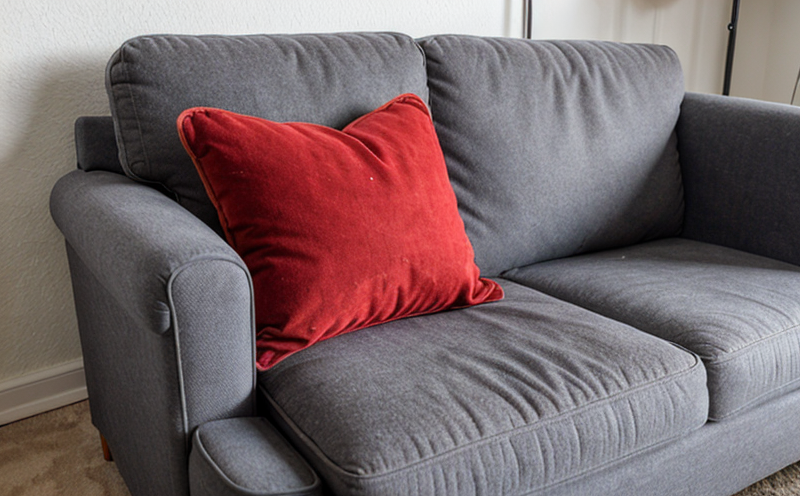ISO 14184-1 Formaldehyde Content Testing of Upholstery Textiles
The ISO 14184 series addresses formaldehyde content in textile products. Specifically, ISO 14184-1 focuses on the determination of free and uncombined formaldehyde in textiles used for upholstery and related cushion materials.
This test is critical for ensuring compliance with regulatory standards aimed at protecting consumer health from potential exposure to harmful levels of formaldehyde. Upholstery fabrics are frequently exposed to various environmental conditions that may affect their stability, including moisture, temperature fluctuations, and mechanical stress. Therefore, it is essential to monitor the release of formaldehyde during these processes.
The testing method involves extracting formaldehyde from the upholstery textiles using a buffered aqueous solution under controlled conditions. The extracted formaldehyde is then analyzed by gas chromatography or other suitable analytical techniques. This process ensures accurate quantification of free and uncombined formaldehyde, which can be harmful if present in excessive quantities.
Understanding the formaldehyde content in upholstery textiles helps manufacturers ensure product safety while maintaining quality standards. By adhering to ISO 14184-1, companies demonstrate their commitment to producing safe, high-quality products that meet international health and safety regulations.
The results of this test are crucial for various stakeholders involved in the furniture manufacturing process. Quality managers can use these findings to improve product design, materials selection, and production processes. Compliance officers gain valuable insights into regulatory compliance and potential recalls or legal issues. R&D engineers find it useful for developing new formulations that minimize formaldehyde emissions. Procurement teams benefit from this data when selecting suppliers who adhere to rigorous safety standards.
The standard's applicability extends beyond mere compliance; it also supports broader sustainability goals by promoting the use of safer materials in furniture production. By reducing harmful emissions, manufacturers can contribute positively to environmental conservation efforts and enhance public health.
Applied Standards
| Standard Number | Description |
|---|---|
| ISO 14184-1:2016 | Determination of free and uncombined formaldehyde in textiles used for upholstery, cushions, and similar products - Part 1: Extraction by a buffered aqueous solution |
Benefits
The ISO 14184-1 test offers several benefits that are crucial for maintaining product safety and compliance. Firstly, it ensures that formaldehyde levels in upholstery textiles remain within acceptable limits set by health and environmental regulations. Secondly, this testing method provides manufacturers with valuable data to optimize their manufacturing processes, leading to more consistent and reliable products.
By conducting ISO 14184-1 tests regularly, companies can identify potential issues early on, allowing them to address these concerns promptly. This proactive approach not only minimizes risks but also enhances consumer trust in the brand. Additionally, adhering to such standards demonstrates a company's commitment to responsible business practices and environmental stewardship.
Furthermore, compliance with ISO 14184-1 can significantly reduce the likelihood of product recalls or legal disputes due to non-compliance. This not only saves time and resources but also protects the brand's reputation. In today’s competitive market, maintaining a strong reputation is vital for long-term success.
The test results also play a significant role in meeting the growing demand for eco-friendly products. Consumers increasingly prefer brands that prioritize sustainability and safety. By offering products tested according to ISO 14184-1, manufacturers can cater to this trend effectively.
Why Choose This Test
- Mitigation of health risks associated with formaldehyde exposure.
- Achievement of regulatory compliance for upholstery products.
- Enhancement of product quality and consistency through precise measurement.
- Promotion of sustainable practices by minimizing harmful emissions.
- Reduction in the risk of product recalls or legal challenges.
- Increased consumer trust and satisfaction due to demonstrated safety measures.
- Support for broader sustainability goals within the furniture industry.





